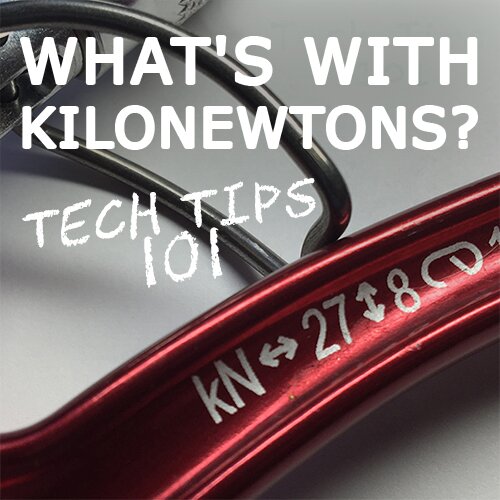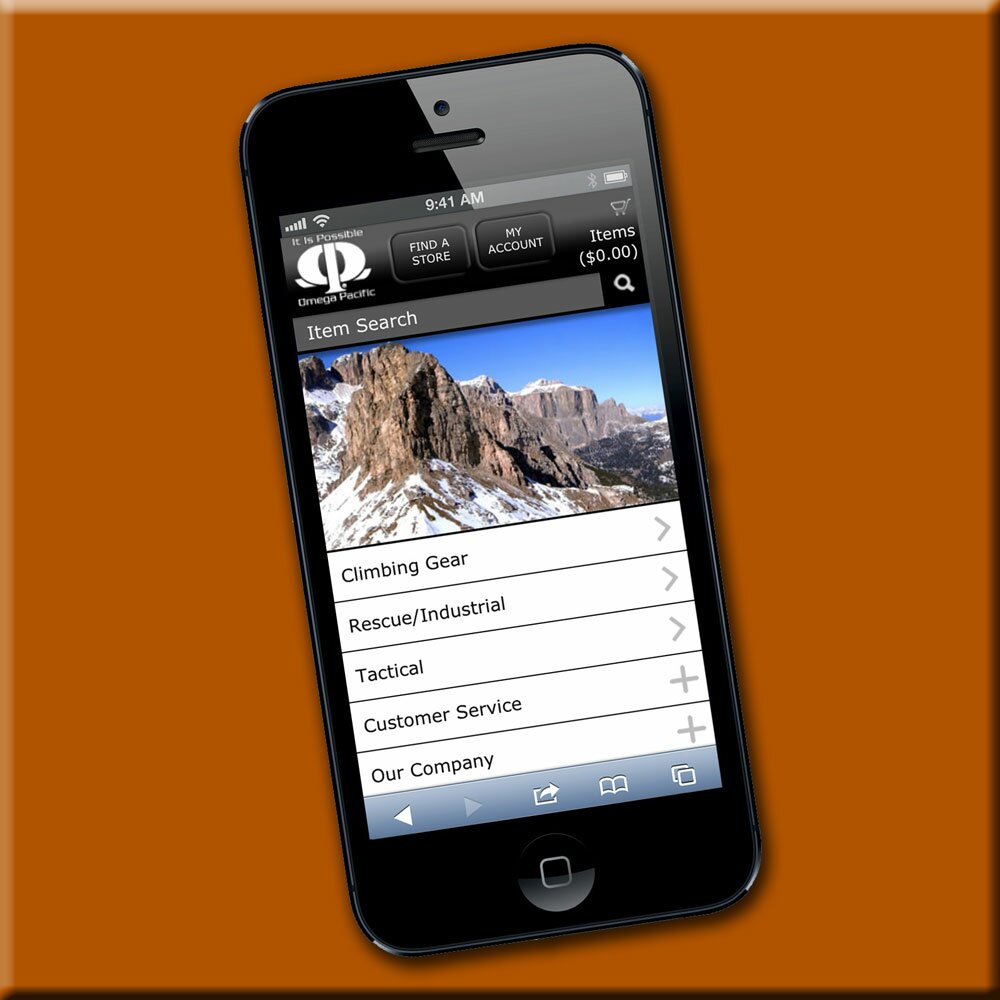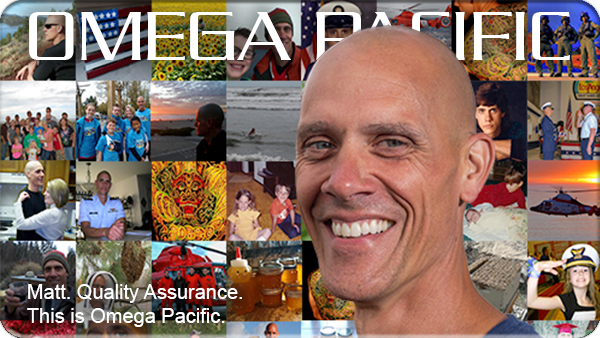Tech Tip: What's With Microfractures?
By
Posted 08/23/16

TECH TIPS 101: Microfractures ... feared, but are they real?
Last week, Terk from Nashville wrote:
“I took a rope access class with my department and the instructor told us carabiners may have microfractures we can’t see which could cause them to fail. Is that true?”
Great question, Terk ...
If there’s a bogeyman in Gearville, it’s the microfracture. Everyone’s heard about the major defect so small it can’t be seen; how they can be introduced by dropping a ‘biner from as low as waist high! What could be scarier?
But has anyone ever seen one?
A while back, we picked up a couple ‘biners from the blocks and talus at the base of El Capitan and brought them home to put on our tensile tester. We were surprised when they each broke over rating, so we made a call and, pretty soon, we got a box full of gear: ‘biners, cams, nuts & other hardware from at least a half-dozen manufacturers, including us, all recovered from the base of El Cap by our pals in Camp 4.
Thirty pieces of climbing gear in the box. We assumed each one had been dropped by climbing parties—no telling whether from ten or three thousand feet—but all passed the visual and functionality tests. The worst damage was a bent cam tip, presumably from impact with the scree where it was found.
We put on the lab coats, brewed up a fresh pot of coffee and got to breaking stuff. The results surprised us again: every item broke at or above its rating.
What about steel?
For that, we tortured a half dozen of our most popular professional-grade, plated-steel carabiners. We tied them to bumpers like newlyweds, beat them with hammers; pitched them from rooftops and mistreated them as creatively as possible.
Again, any goods that passed visual and functionality inspection broke at or above rating.
A scan of QA records doesn’t reveal anything, either. We regularly test raw material, work in progress and finished goods, which means we might break up to 11,000 ‘biners a year for quality assurance. We’ve tested at least a couple hundred thousand carabiners all these years and haven’t found a microfracture, yet.
So … what do we do with that?
Don’t climb on gear you salvage from the base of cliffs, regardless how sturdy our little box of kit turned out, that’s first.
Second, if you drop any piece of hardware from high up, you should just retire it. When you trust your life to a piece of equipment, you don’t need the doubt. Plus, it’s a good, professional practice, anyway.
Finally, your best bet is to rely on the visual and function tests. Look for variations to any original dimension, indicating the frame may have stretched. Look for scrapes, gouges or defects that can’t easily be buffed smooth with a few strokes of very fine abrasive paper (250-400 grit); retire the item if any are found. Check for functionality: the gate should open smoothly and close automatically. The locking mechanism should operate freely and with ease. Provided these conditions are met, you should feel pretty confident that your ‘biners are microfracture-free!
As always, the Old Wisdom applies: "When In Doubt, Throw It Out!"
![]()
Tech Tip: What's With Kilonewtons?
By
Posted 06/14/16

Tech Tip:
Question: “Why is gear rated in kilonewtons? Why not pounds or kilograms? I know a car weighs about 4000 pounds … what’s a newton?”
We get this question a lot, because it’s easy to get confused by the nomenclature.
All modern equipment is rated in kilownewtons (kN),—instead of the more familiar “pounds” or “kilos”—pretty much because the “newton” is THE standard unit of force, according to the International System of Units. Technically, Americans aren’t bound by this, but it’s the common terminology of the rest of the world’s gear builders, so it makes sense for us, too.
In the old days, when gear was marked in pounds or kilograms, it caused heartburn; way too often, we’d hear from folks who towed their two-ton vehicle halfway across some state with a carabiner, figuring they were good to go, because the ‘biner said “4,000lbs” on it. Of course, they were wrong. Very wrong. Don’t tow cars with carabiners. Please.
Here’s why:
The rating of a carabiner indicates the maximum force the product is designed to withstand, not the maximum mass of what you can connect to it.
If you load 4000 pounds onto a 4000-pound carabiner, it’ll hold. Bounce the load and it won’t. Put a couple-hundred-pound load on the same biner, though, and you can bounce all day long on it. This happens every day at crags all over the world: lightweight climbers taking lots of low-force falls, relative to maximum breaking strength.
Anyway, by using a unit of force that’s a bit unfamiliar, it helps removes temptations to do weird and dangerous things with carabiners. That said, should one want to convert kilonewtons into pounds of force, you multiply by 224.8 …
31kN x 224.8 = 6,968.8 lbs-force
That’s it.
So, remember:
#1) Gear is rated in kilownewtons because the world agrees it is so.
#2) Never tow a car with climbing gear.
If you have a question for us, please email it to [email protected]. If we use it, we’ll give you free stuff!
![]()
Dura Draw Pro Review
By
Posted 11/06/15
"At the end of the day, we all want to be as safe as we can, and feeling secure in something as simple as a quickdraw, year after year, is pretty great." ~ Craig DeMartino (athlete with Evolv and Arc'teryx and BlueWater Ropes)
http://dirtbagdreams.com/2015/11/06/proview-omega-pacific-dura-draw-review/
![]()
Quick Draws
Mobile Website Launched
By Jon Jonckers
Posted 08/20/13

Go mobile with us! Our BRAND NEW, full-function mobile website is optimized for smart phones and tablets. Now you can get product specs and tutorials in the field, or download usage instructions or safety tips. Easy and convenient from any mobile device.
![]()
Adventure Journal
By Jon Jonckers
Posted 11/27/12
What a great write up by Brendan Leonard at The Adventure Journal about our committment to US Manufacturing!
http://www.adventure-journal.com/2012/11/made-in-america-omega-pacific-climbing-gear/
![]()
Mountain Gear tours Omega Pacific
By Jon Jonckers
Posted 11/27/12
Thanks Mountain Gear for your ongoing support and your enthusiasm for Omega Pacific. Here's a great summary from their latest tour of our headquarters.
http://www.mountaingear.com/themountainblog/2012/11/omega-pacific-factory-tour/
![]()
Barantuse, Door to the Future
By Carlos Buhler
Posted 11/21/11
It was 1980 and a year had elapsed since I’d met and climbed with members of the Montaneros de Aragon for three weeks on the Huandoy peaks in Peru, when I received a letter from these dear friends with terrific news: Pepe Diaz, in celebration of the fiftieth anniversary of the club, had been asked to lead a team of Spaniards from Aragon to an extraordinary Himalayan objective, the East Peak of Nanda Devi. Among those invited were my two close friends, Javier and Lorenzo, from Huesca, with whom I had climbed in the Cordillera Vilcanota. It was absolutely remarkable to receive this new invitation to join them! Immediately, I realized that this would be the greatest mountaineering adventure of my young career. All I could think about was what a privilege it would be to climb among such a tight team of friends. I would be the only foreigner in the group and it would be up to me to find a way to fit in and add strength to the team.
It is said that Americans are intensely individual thinkers. In many circumstances, this character trait works to our advantage. However, among the Spanish, this tendency would have to be modified. It was with these people that I began to learn anew what it means to be part of a "team".
I grew up in the sixties and began climbing in the seventies. Mine was a climbing culture built primarily of individuals. Our hard-fought efforts on the walls of Yosemite, the Tetons, the Cascades, and the Canadian Rockies stood as testaments to vision and tenacity. Though the idea of teamwork was not foreign to Americans, the balance of how to make a team function well, is centered around the individual bringing his own strength, skill and abilities which help propel the team towards its goal. Though this concept is fully appreciated within climbing circles of Spain, there is another current in their culture that simultaneously draws from the strength of the team to insure the individual will prosper. In a very general sense, Spanish climbers are about “community” first and “individuality” second. Americans, from what I could see, were driven by the reverse.
Thus, here I was, asked be part of the 1980 Aragonese climbing expedition to a great Himalayan Peak, and the only foreigner to be included. As on Huandoy, it would be a tremendous honor, and simply being invited gave me an enormous boost. At the same time, however, it would be a huge learning experience in multi-cultural "teamwork".
As luck would have it, our objective was changed, for political reasons, to Baruntse, a gorgeous, 7123 meter Nepalese peak with only one ascent to date. Our route would be the unclimbed East Ridge, and the approach would follow the Arun River from an airstrip in Tumlingtar to a very high base camp on the Barun Glacier beneath the tremendous western walls of Makalu.
Many words have been written about our ascent of Baruntse’s East Ridge and I won’t unnecessarily add to those here. Yet I must say how much climbing with this expedition changed me. In the seventies—a time when I was drawn to the mountains like a child to candy—the American Alpine Club offered very limited financial backing for young mountaineers to acquire experience on the big peaks. It takes a certain level of risk for any club or team to include a climber of modest experience and open the doors for them to new level of climbing. This, in essence, is what the Montaneros de Aragon did for me in 1980 when they included me in their climb of Baruntse.
Three years later, when the American East Face of Everest Expedition selected their team of twelve, there is little doubt in my mind that I was considered for a position, in large part, because of the expedition to Baruntse. Our success on the Kangshung Face of Everest, and what I learned there from my teammates, opened up vast possibilities for me to further my dreams in climbing. To this day, I am fully aware that the life long opportunities I have had to explore the world’s wild places during these past 30 years was born when I met and climbed with the Spanish from Aragon.
![]()
Carlos Buhler needs little introduction. His ascents of Everest, Ama Dablam, Changabang, Kangchengjunga, K2, Nanga Parbat, Cho Oyu, Aconcagua, Cerro Torre and countless others have earned him legendary status. We are privileged to count him as our friend. Read more at www.carlosbuhler.com
"Climbing is Inherently Dangerous..."
By David Roetzel
Posted 07/01/04
On April 8th, 2004 I got a personal lesson in why we are told this... I was climbing near home in Vail, Colorado when I was involved in an accident that will surely change me forever. I was just beginning a mixed climb when the entire starting block ripped off the ceiling with me under it. This feature was like a large rectangle pasted onto the ceiling above me: about five feet wide, a foot tall and probably two feet deep. Our estimates put it in the 500 pound range. Had I not stick-clipped both the fi rst AND second bolts, this story, if written, would have been penned by another.
A couple moments earlier, I’d walked to the back of the steep cave and placed my tools on the starting block, seven feet off the ground. I placed my left foot on a hold below and pulled. As I raised my right foot over my head, my heel spur touched the shelf and it detached from the ceiling. The resultant fall ended with my butt skimming the ground and the shelf landing directly on my left midfoot. For an instant there was silence, broken by me screaming. Fortunately, the rock broke into pieces and we did not have to move any debris off of me. I began to pull it together as my friends and I packed up. The 45-minute slide/crawl back to the car tested my control and pain tolerance like never before.
Immediately upon reaching the doctor I asked for pain medication. The x-rays came next, which even to a layman looked bad. I had broken seven bones. My fi rst metatarsal was so displaced that it had poked holes through my skin—an open fracture. The bases of my second, third, fourth and fi fth metatarsals were cracked as was my lateral cuneiform. My cuboid bone had been crushed. Amazingly my toes, ankle, and heel were untouched. Sadly, the crushing nature of the injury did signifi cant damage to the soft tissue of my foot as well. Although it did not look too bad initially, what my skin went through over the next several weeks was cause for more concern than the state of my skeleton.
Three surgeries over the next four weeks were required to undo what I had done. A plate with four screws was used to fi x my fi rst metatarsal, four pins, complete with external fi xator rods, were installed to distract my foot away from my crushed cuboid bone, which was eventually fi xed via a cadaver bone graft. There was also the bi weekly lancing and trimming of fracture blisters at the doctor’s offi ce. At one point my doctor thought the area of my skin where the rock made impact was void of blood, therefore oxygen, which is referred to as necrotic tissue. Although there was talk of fl esh removal, our concern faded the next day when my doctor poked me with a needle in four places around the perimeter of the wound. A quick onset of bright red blood and the fact that I felt pain made us feel better. I had boarded the healing train. Eleven weeks after my accident I began my physical therapy, a sign of progress. My foot is healing well and although the next six weeks will bring painful physical therapy three times a week, I welcome the pain because with it brings healing.
The day I hurt myself I entered one of the most challenging periods of my life to date. Although I am now past the worst, some of my scars have nothing to do with my foot; these go deeper. There were days that I had to dig deep to maintain faith that I would heal. I easily could have stepped into the shadows of self pity only to darken my already weakened spirit. But I didn’t. It has taken time and patience, but this injury has only invigorated my love of life and, in turn, illuminated what is really important to me. In this light I have re-discovered parts of me that I have not been in touch with for a while, things I may never have found again if I had not been injured. My “spider sense” or trust in my intuition was also reaffi rmed; it was tingling a bit immediately before I began to climb and I chose to foolishly ignore it. Through this humbling experience, I have learned a greater respect for all that is around me-which in turn brings peace.
Today marks twelve weeks since my accident. It has been a long road so far. It has been hard on my wife, my children, and on me. Yet, with all the hassles and heartache, I know I will get better now, I can feel it. My foot will never be the same again. However, it will be close... close enough to always remind me of how lucky I am. I am lucky to be alive, I am lucky for the health of my friends and family, and I am lucky that I will get to climb again. Climbing feeds my soul and even though it can bring pain and death, I cannot deny its siren song. What I gain from climbing outweighs the inherent risks.
![]()
David %u201CRoetz%u201D Roetzel lives in Avon, Colorado and owns and operates Vail Rock and Ice Guides, a year round climbing company. He also teaches two nights a week at the local indoor wall. Both he and his family are looking forward to a full recovery so he can move from extreme couch surfi ng back to his true passion, climbing.





